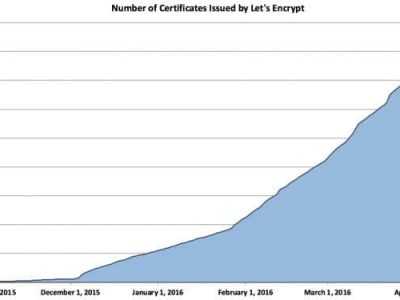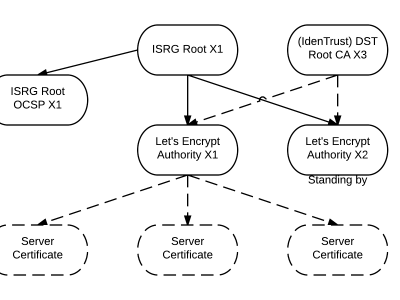Linux中國
Linux終端的樂趣之把玩字詞計數

在使用的腳本來分析文本文件之前,我們必須有一個文本文件。為了保持一致性,我們將創建一個文本文件,man命令的輸出如下所述。
$ man man > man.txt
以上命令是將man命令的使用方式導入到man.txt文件里。
我們希望能得到最平常的單詞,對之前我們新建的文件執行如下腳本。
$ cat man.txt | tr ' ' '�12' | tr '[:upper:]' '[:lower:]' | tr -d '[:punct:]' | grep -v '[^a-z]' | sort | uniq -c | sort -rn | head
Sample Output
7557
262 the
163 to
112 is
112 a
78 of
78 manual
76 and
64 if
63 be
上面的腳本,輸出了最常使用的十個單詞。
如何看單個的字母呢?那就用如下的命令。
$ echo 'tecmint team' | fold -w1
Sample Output
t
e
c
m
i
n
t
t
e
a
m
注: -w1隻是設定了長度
現在我們將從那個文本文件中掰下來的每一個字母,對結果進行排序,得到所需的輸出頻率的十個最常見的字元。
$ fold -w1 < man.txt | sort | uniq -c | sort -rn | head
Sample Output
8579
2413 e
1987 a
1875 t
1644 i
1553 n
1522 o
1514 s
1224 r
1021 l
如何區分大小寫呢?之前我們都是忽略大小寫的。所以,用如下命令。
$ fold -w1 < man.txt | sort | tr '[:lower:]' '[:upper:]' | uniq -c | sort -rn | head -20
Sample Output
11636
2504 E
2079 A
2005 T
1729 I
1645 N
1632 S
1580 o
1269 R
1055 L
836 H
791 P
766 D
753 C
725 M
690 U
605 F
504 G
352 Y
344 .
請檢查上面的輸出,標點符號居然包括在內。讓我們幹掉他,用tr 命令。GO:
$ fold -w1 < man.txt | tr '[:lower:]' '[:upper:]' | sort | tr -d '[:punct:]' | uniq -c | sort -rn | head -20
Sample Output
11636
2504 E
2079 A
2005 T
1729 I
1645 N
1632 S
1580 O
1550
1269 R
1055 L
836 H
791 P
766 D
753 C
725 M
690 U
605 F
504 G
352 Y
現在,我們有了三個文本,那就讓我們用如下命令查看結果吧。
$ cat *.txt | fold -w1 | tr '[:lower:]' '[:upper:]' | sort | tr -d '[:punct:]' | uniq -c | sort -rn | head -8
Sample Output
11636
2504 E
2079 A
2005 T
1729 I
1645 N
1632 S
1580 O
下一步我們將會生成那些罕見的至少十個字母長的單詞。以下是簡單的腳本:
$ cat man.txt | tr '' '�12' | tr '[:upper:]' '[:lower:]' | tr -d '[:punct:]' | tr -d '[0-9]' | sort | uniq -c | sort -n | grep -E '..................' | head
Sample Output
1 ──────────────────────────────────────────
1 a all
1 abc any or all arguments within are optional
1 able see setlocale for precise details
1 ab options delimited by cannot be used together
1 achieved by using the less environment variable
1 a child process returned a nonzero exit status
1 act as if this option was supplied using the name as a filename
1 activate local mode format and display local manual files
1 acute accent
注: 上面的.越來越多,其實,我們可以使用.{10} 得到同樣的效果。
這些簡單的腳本,讓我們知道最頻繁出現的單詞和英語中的字元。
現在結束了。下次我會在這裡講到另一個有趣的話題,你應該會喜歡讀。還有別忘了向我們提供您的寶貴意見。
via: http://www.tecmint.com/play-with-word-and-character-counts-in-linux/
作者:Avishek Kumar 譯者:MikeCoder 校對:wxy
本文轉載來自 Linux 中國: https://github.com/Linux-CN/archive
對這篇文章感覺如何?
太棒了
0
不錯
0
愛死了
0
不太好
0
感覺很糟
0
More in:Linux中國
捐贈 Let's Encrypt,共建安全的互聯網
隨著 Mozilla、蘋果和谷歌對沃通和 StartCom 這兩家 CA 公司處罰落定,很多使用這兩家 CA 所簽發證書的網站紛紛尋求新的證書籤發商。有一個非盈利組織可以為大家提供了免費、可靠和安全的 SSL 證書服務,這就是 Let's Encrypt 項目。現在,它需要您的幫助
Let's Encrypt 正式發布,已經保護 380 萬個域名
由於 Let's Encrypt 讓安裝 X.509 TLS 證書變得非常簡單,所以這個數量增長迅猛。
關於Linux防火牆iptables的面試問答
Nishita Agarwal是Tecmint的用戶,她將分享關於她剛剛經歷的一家公司(印度的一家私人公司Pune)的面試經驗。在面試中她被問及許多不同的問題,但她是iptables方面的專家,因此她想分享這些關於iptables的問題和相應的答案給那些以後可能會進行相關面試的人。 所有的問題和相應的答案都基於Nishita Agarwal的記憶並經過了重寫。 嗨,朋友!我叫Nishita Agarwal。我已經取得了理學學士學位,我的專業集中在UNIX和它的變種(BSD,Linux)。它們一直深深的吸引著我。我在存儲方面有1年多的經驗。我正在尋求職業上的變化,並將供職於印度的P
Lets Encrypt 已被所有主流瀏覽器所信任
旨在讓每個網站都能使用 HTTPS 加密的非贏利組織 Lets Encrypt 已經得了 IdenTrust的交叉簽名,這意味著其證書現在已經可以被所有主流的瀏覽器所信任。從這個裡程碑事件開始,訪問者訪問使用了Lets Encrypt 證書的網站不再需要特別配置就可以得到 HTTPS 安全保護了。 Lets Encrypt 的兩個中級證書 ...






















